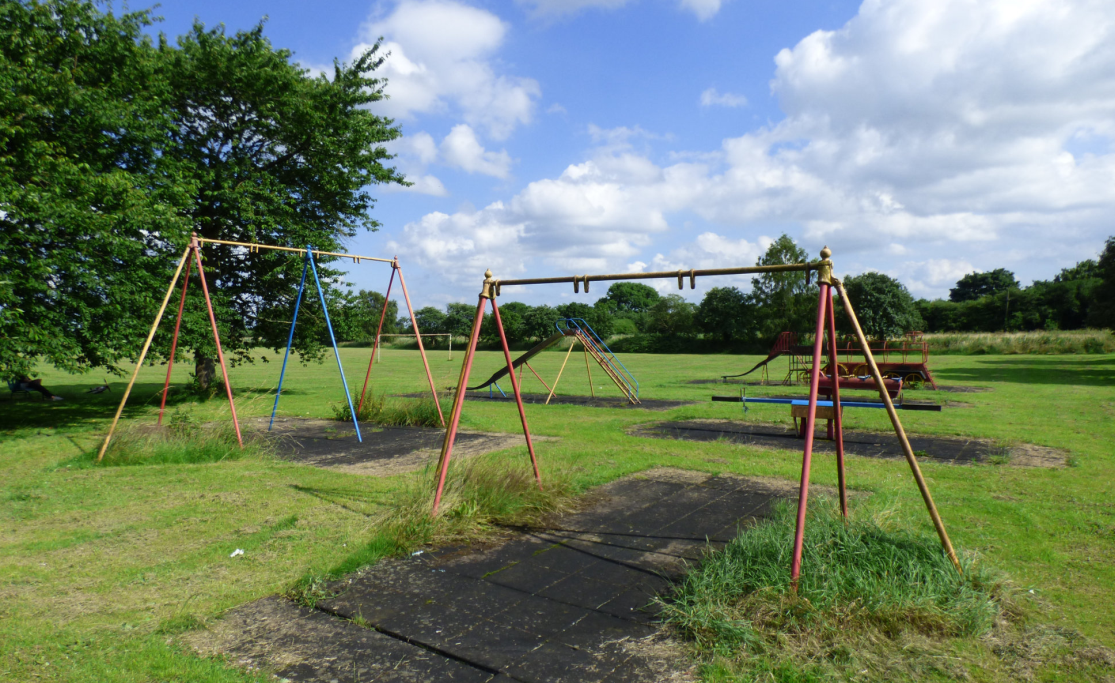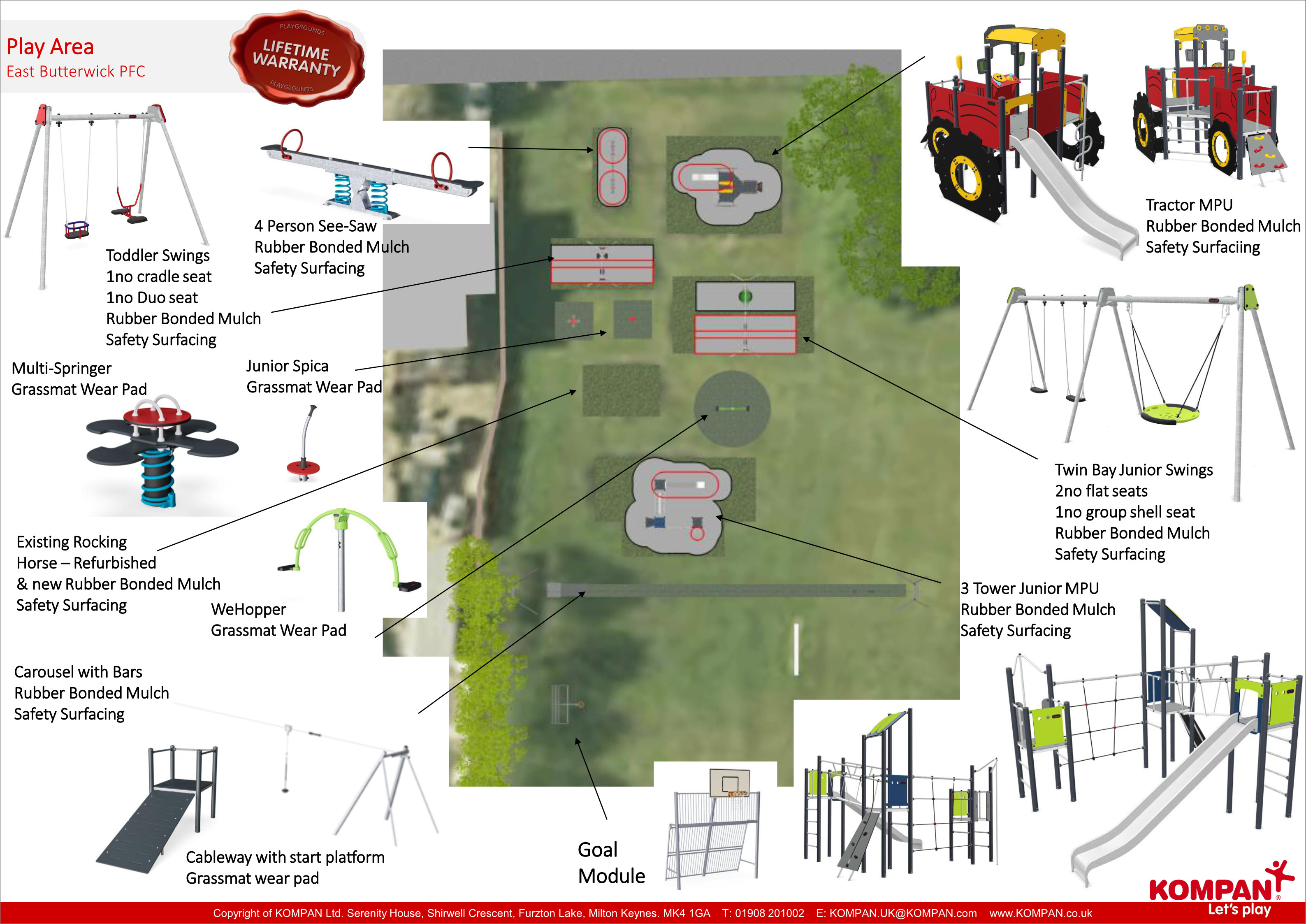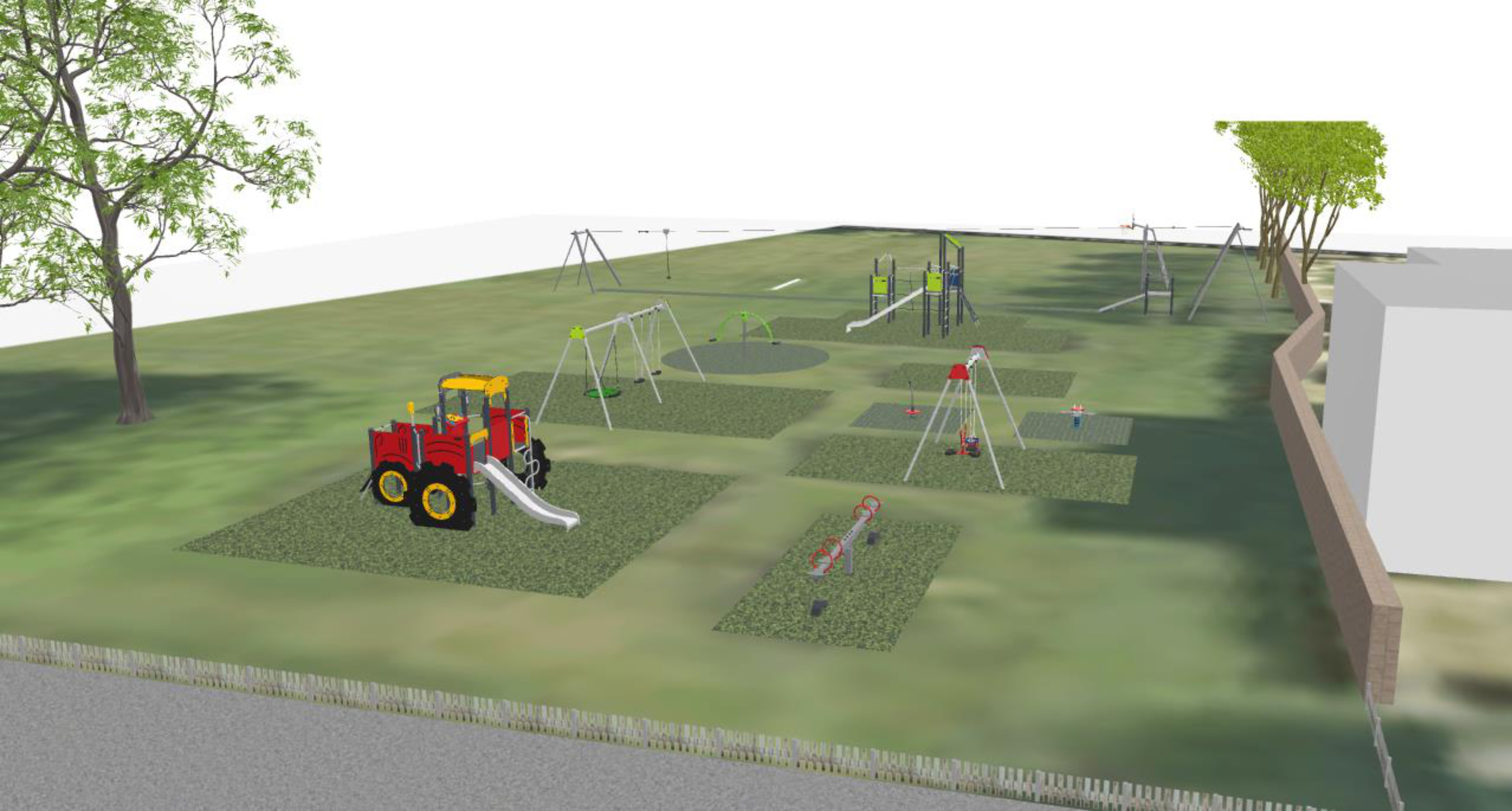The project is not quite the same as my colleague’s voluntary efforts, it is an individual playground. The playground is located in a small village in North Lincolnshire, where my parents own a farm. Hence, I have spent many school holidays and weekends 'helping' my Dad on the farm, which obviously included trips to the playground and field. My time spent there has left a lasting impression on me. So, when my Dad mentioned to me that the equipment had been judged as becoming unsafe and no one was quite sure how to deal with it, I offered to try and help. It is worth noting that we think this park was installed in the 1960's - my Dad and his friends also grew up playing in the park, so it has definitely served its time well. From the photos below, those who know anything about playgrounds will see some familiar 'retro' Wicksteed equipment, and those that don't will still be able to see why this play area has become a safety concern and today’s children deserve something a little more updated.

So where did I start? By asking my colleagues, of course!
After discussing projects that had happened elsewhere, and some reputable equipment suppliers, I started ringing around and collecting brochures. At the same time, I created and distributed a survey to find out what people in the local area wanted to see done. Once I had an idea of the kind of things on offer these days, how much they cost, and what the locals wanted, I met with the local Parish Council and Playing Field Committee to find out what their budget was and how they would like to be involved. By this point, we now had a small team with me as project manager. It was time to start meeting with suppliers on site, discussing our ideas and hearing their thoughts. This all went smoothly and, by September 2021, we were well on our way to getting some designs produced.
Funding was the next hurdle to overcome. None of us had ever applied for any funding or knew where we could get any. After asking local villages about where they had obtained funding from and talking to North Lincs Council, we knew what we were looking for. I could never have imagined how different all the criteria were for each funding body and finding ones to select was difficult, but we got there in the end.
Once we had several design options from the various suppliers, we held a community consultation evening, for all the locals to come along and vote for their favourite design and give us their comments. The main comment we received was that most of the children love the rocking horse and want it to stay. It's a good job that the suppliers were all so easy to get along with, which meant that they were able to draw up an amended plan based, on the suggestions, quite quickly. We now had our finalised design to support our applications.

At this point in time, we have submitted an application to the local council, and are waiting to hear back how much they are willing to give us towards the project, before submitting a larger application to one of the Landfill Community Fund (LCF) organisations. We have selected Kompan as our supplier and agreed a final plan and are now keeping in contact with them, to let them know how far along we are, and they keep us updated on the costs, which unfortunately are rising along with everything else these days.

I have enjoyed the experience of working with my local community so far, and look forward to securing funding and seeing the project get built. It has definitely taught me a lot about the real working world, and how everything doesn’t go to plan. Landscape Architects have to find a way to overcome the issues faced, and working with a range of people with varying skill sets is often the most efficient way to do this. Look out for a post about the completed project, hopefully not in the too distant future.
By Hannah Clark